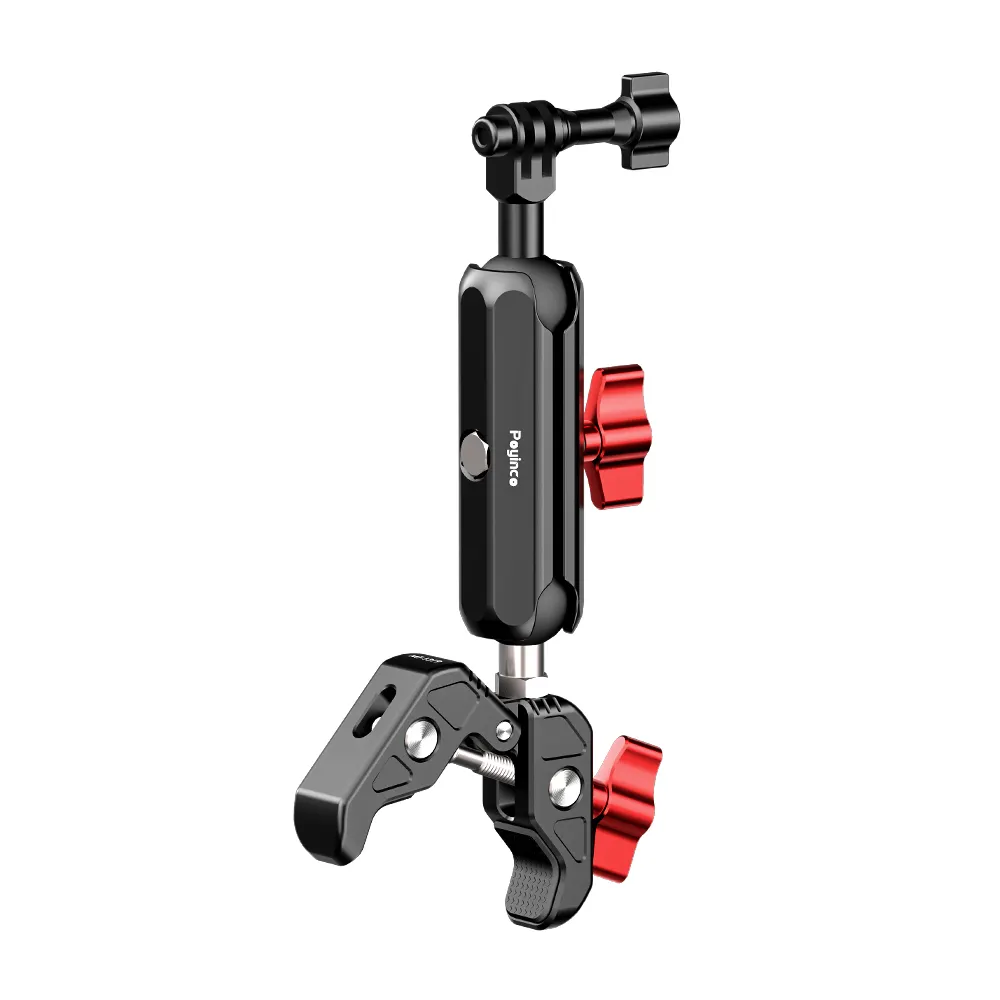

Time:2025-09-25 Views:1

In the realm of camera equipment, ensuring the stability of captured images and videos is paramount, and the vibration resistance of camera brackets plays a crucial role in achieving this. Vibration can stem from various sources, including nearby machinery, vehicle movements, or even the wind, and it can severely degrade the quality of footage by introducing blurriness and unwanted shakes. To address these challenges, camera bracket manufacturers employ a range of innovative techniques and design features.
One of the primary methods for enhancing vibration resistance is the use of shock - absorbing materials. Rubber, silicone, and specialized elastomers are commonly integrated into camera bracket designs. These materials possess excellent damping properties, which means they can absorb and dissipate vibrational energy. For instance, rubber pads can be placed at the contact points between the camera and the bracket, or within the joints of the bracket itself. When vibrations occur, these pads deform, converting the kinetic energy of the vibration into heat energy, which is then dissipated, thereby reducing the impact of the vibration on the camera.
The structural design of the camera bracket also significantly influences its vibration - resistance capabilities. Triangular or trapezoidal structures are often favored due to their inherent stability. By distributing forces evenly across multiple points, these geometric shapes can resist deformation caused by vibrations. Additionally, brackets with a lower center of gravity are less likely to be affected by vibrations. Manufacturers may design brackets with weighted bases or use counterweights to lower the center of gravity, enhancing stability even in the presence of external vibrations.
Another important aspect is the tightness and rigidity of the bracket's joints. Loose joints can act as points of resonance, amplifying vibrations. High - quality camera brackets feature precision - engineered joints with locking mechanisms, such as screws, bolts, or quick - release clamps, that can be tightened securely. Some advanced brackets even use ball - and - socket joints with friction - control systems, allowing for flexible positioning while maintaining a firm hold to prevent unwanted movement caused by vibrations.
In applications where cameras are mounted on moving platforms, such as vehicles or drones, active vibration - damping systems can be employed. These systems use sensors to detect vibrations in real - time and then activate counter - measures, such as motors or actuators, to generate opposing forces that cancel out the vibrations. While more complex and costly, these active systems offer the highest level of vibration resistance, ensuring crystal - clear footage even in the most challenging, vibration - prone environments.
Read recommendations:
fine art underwater photography Accessories